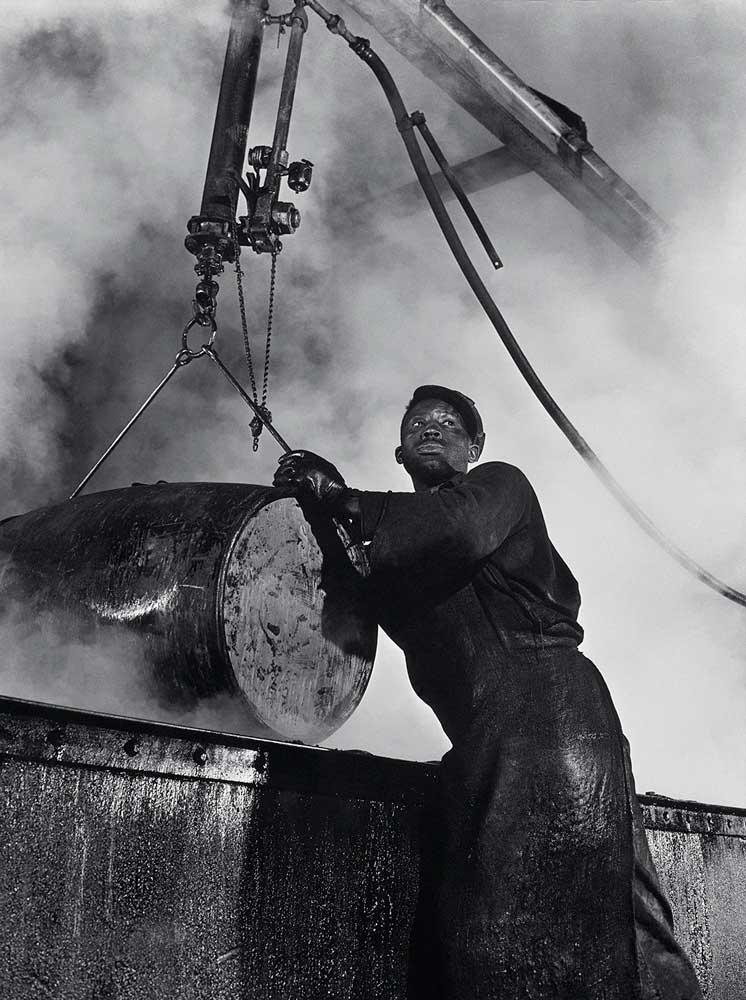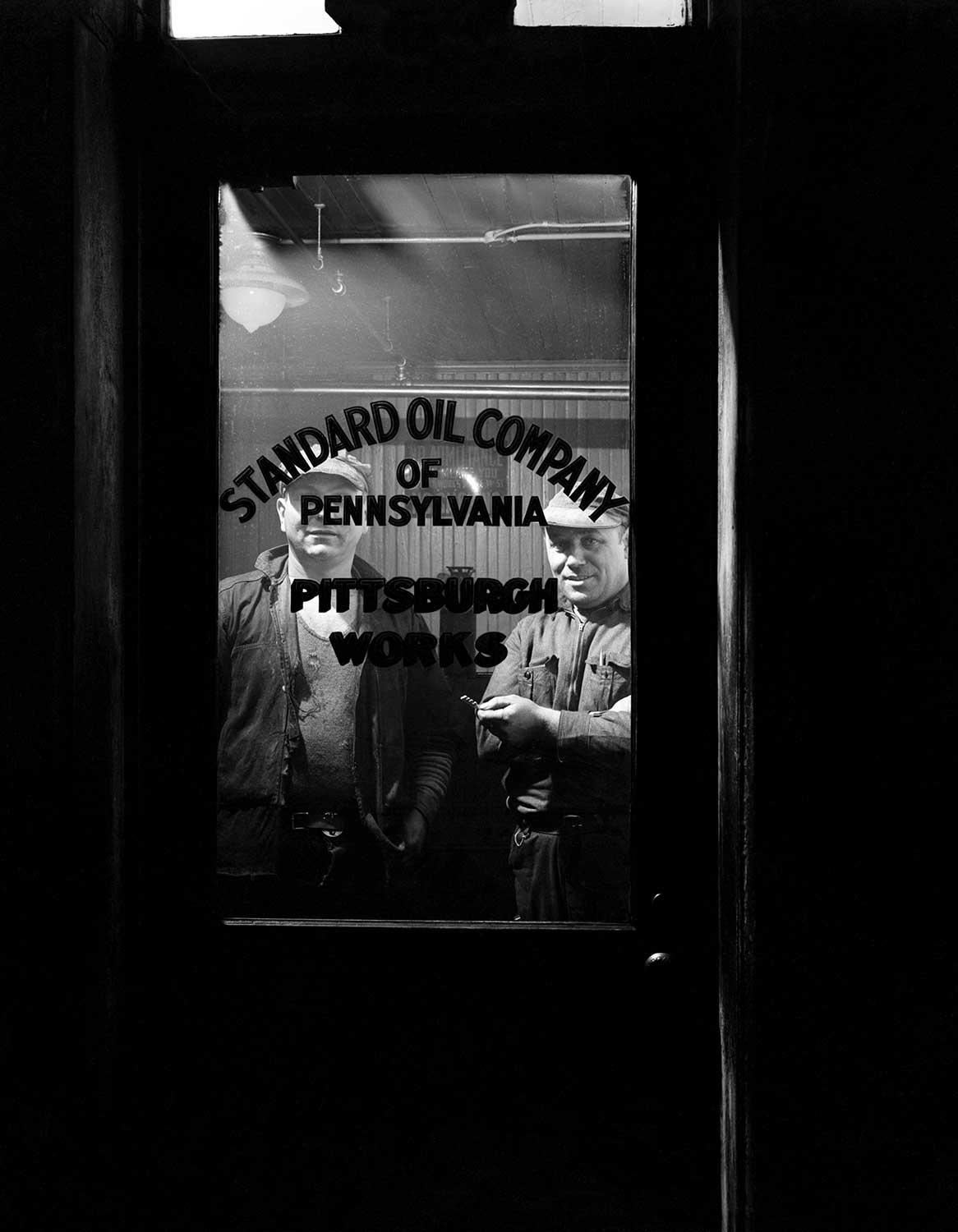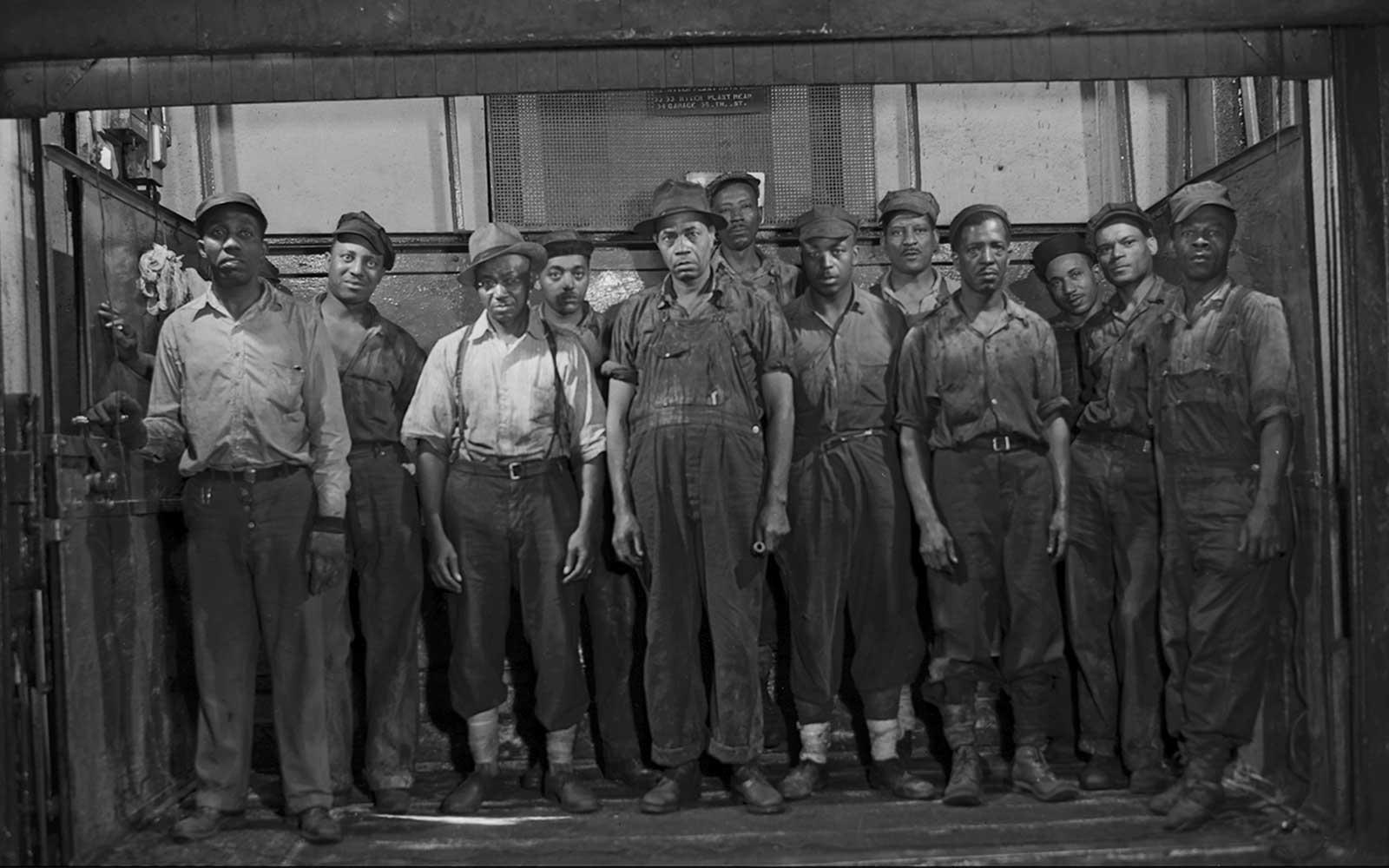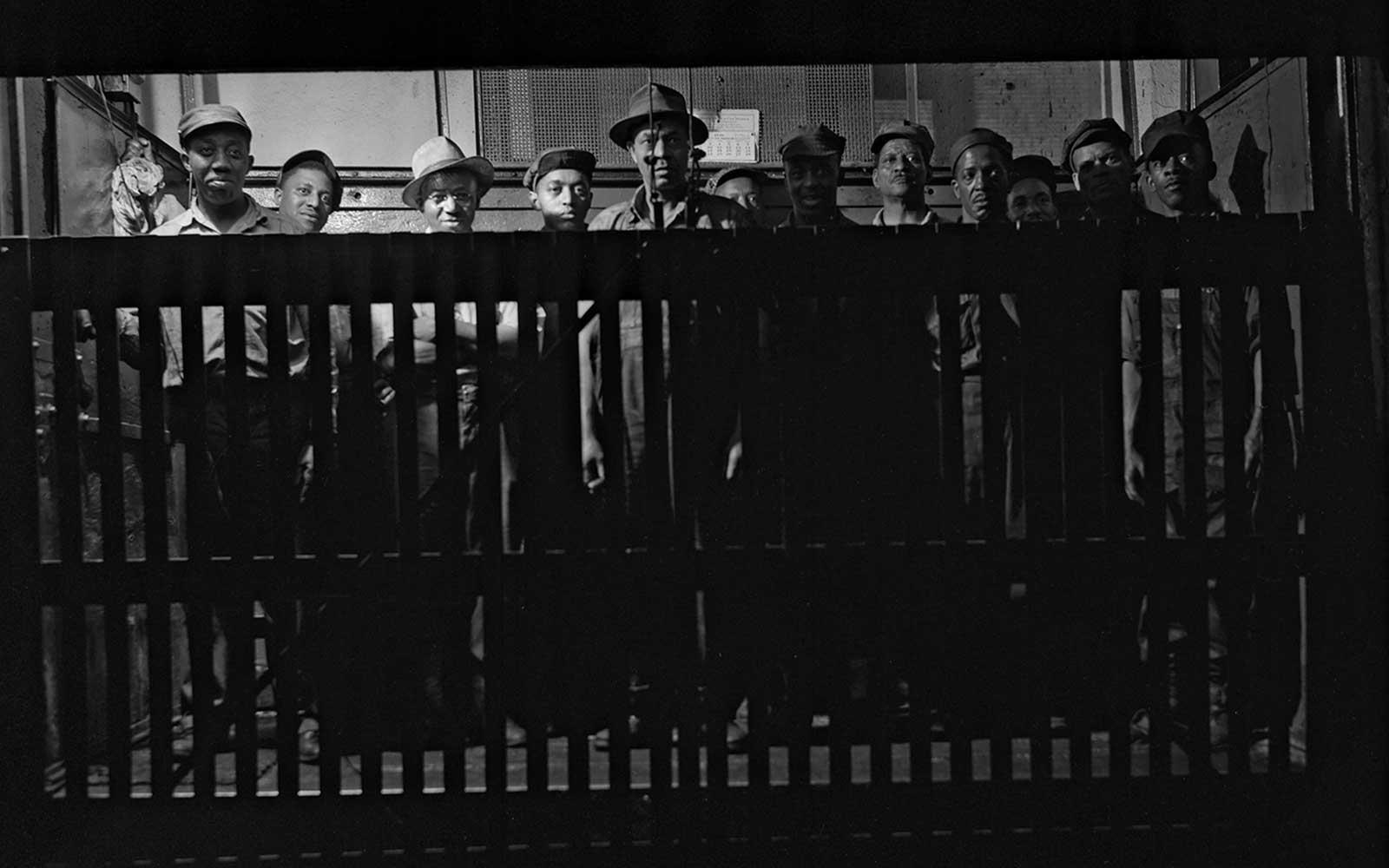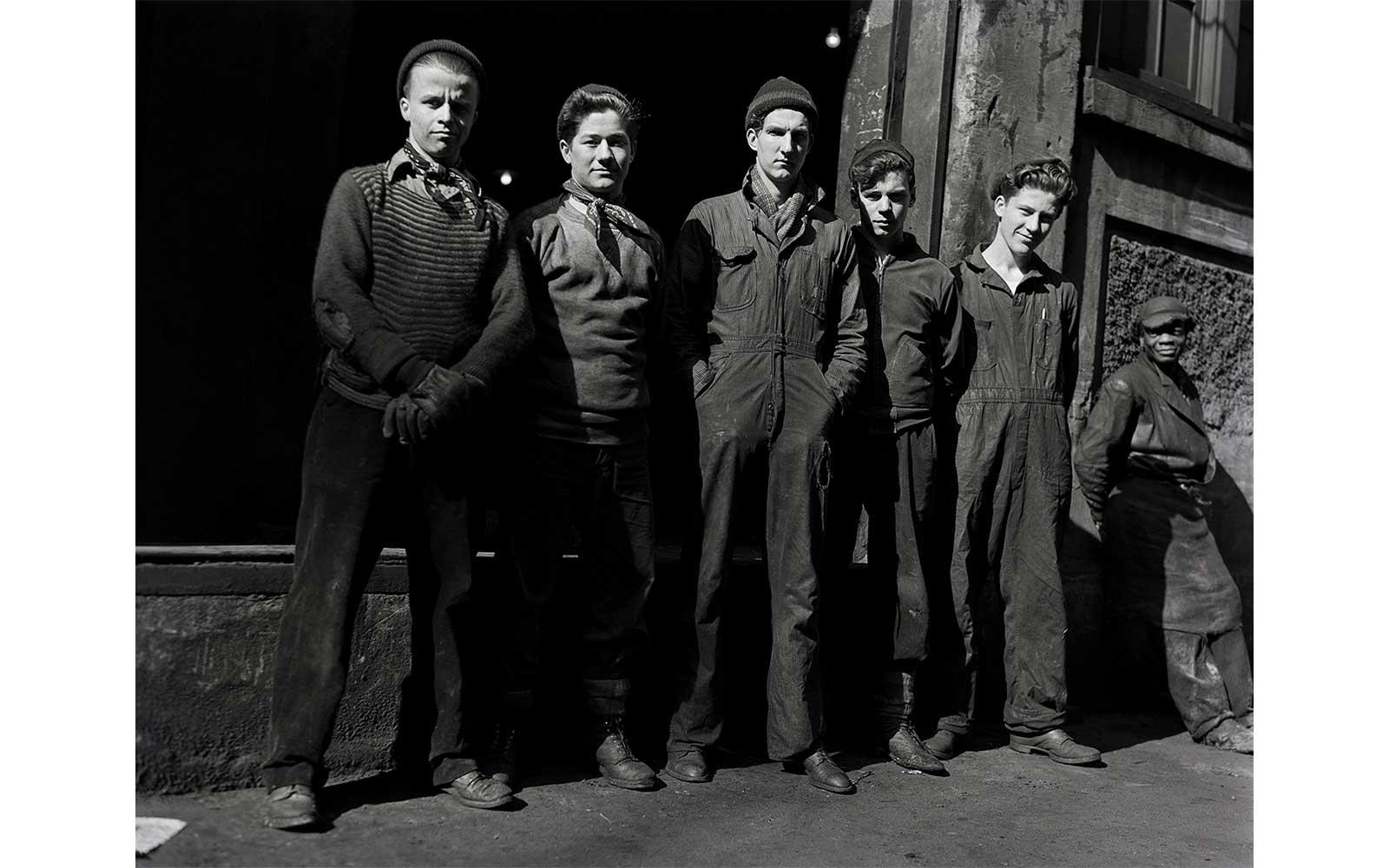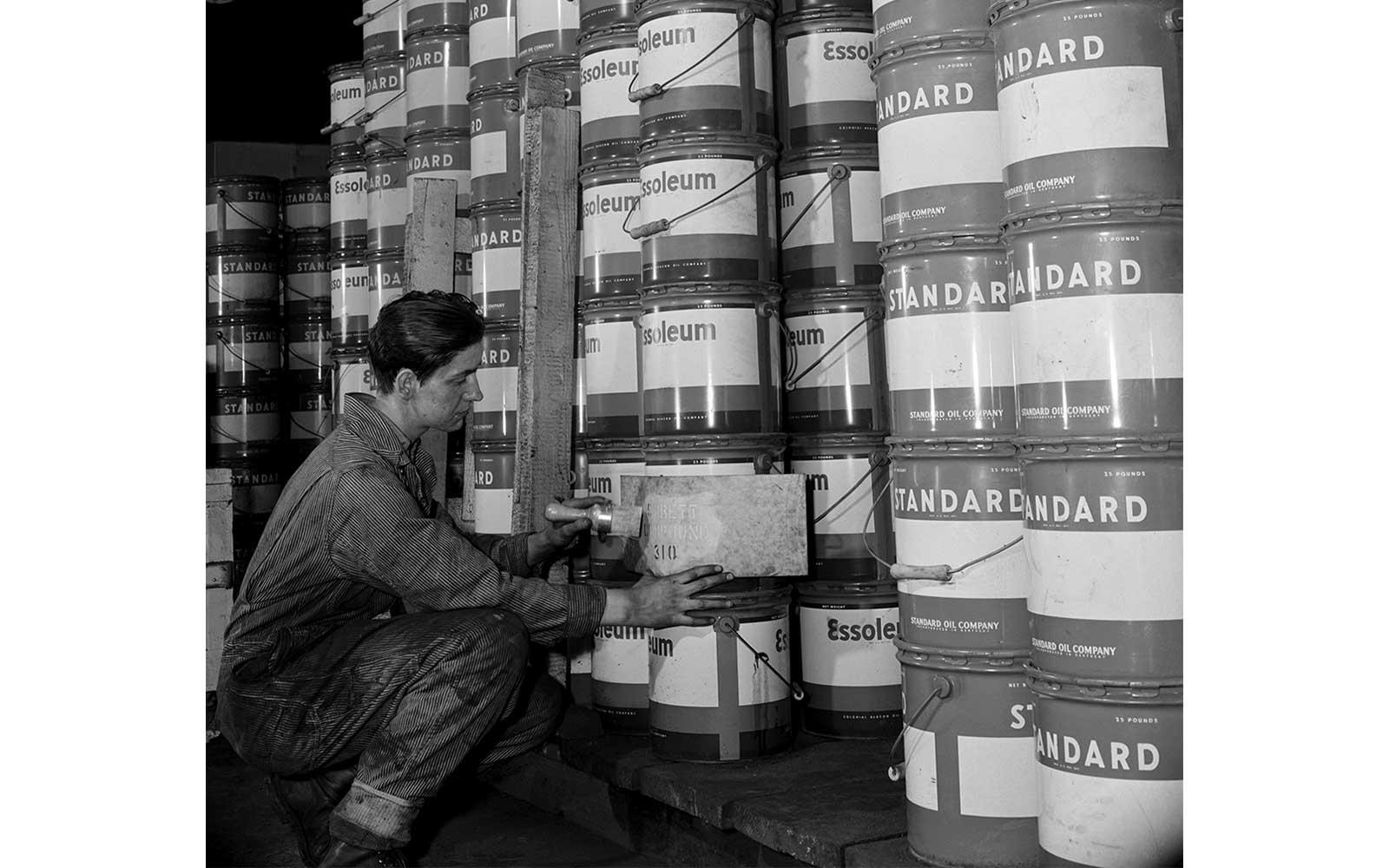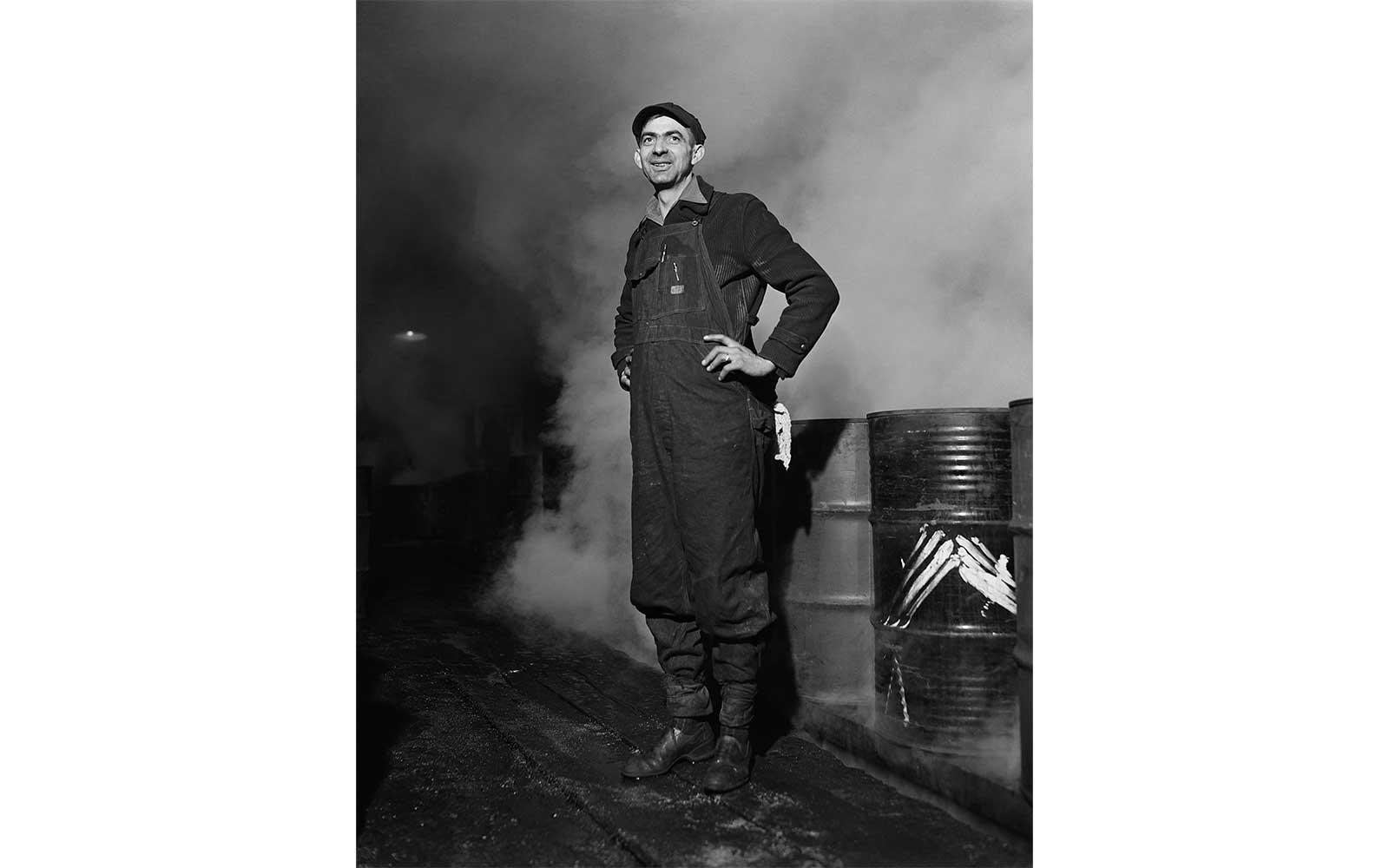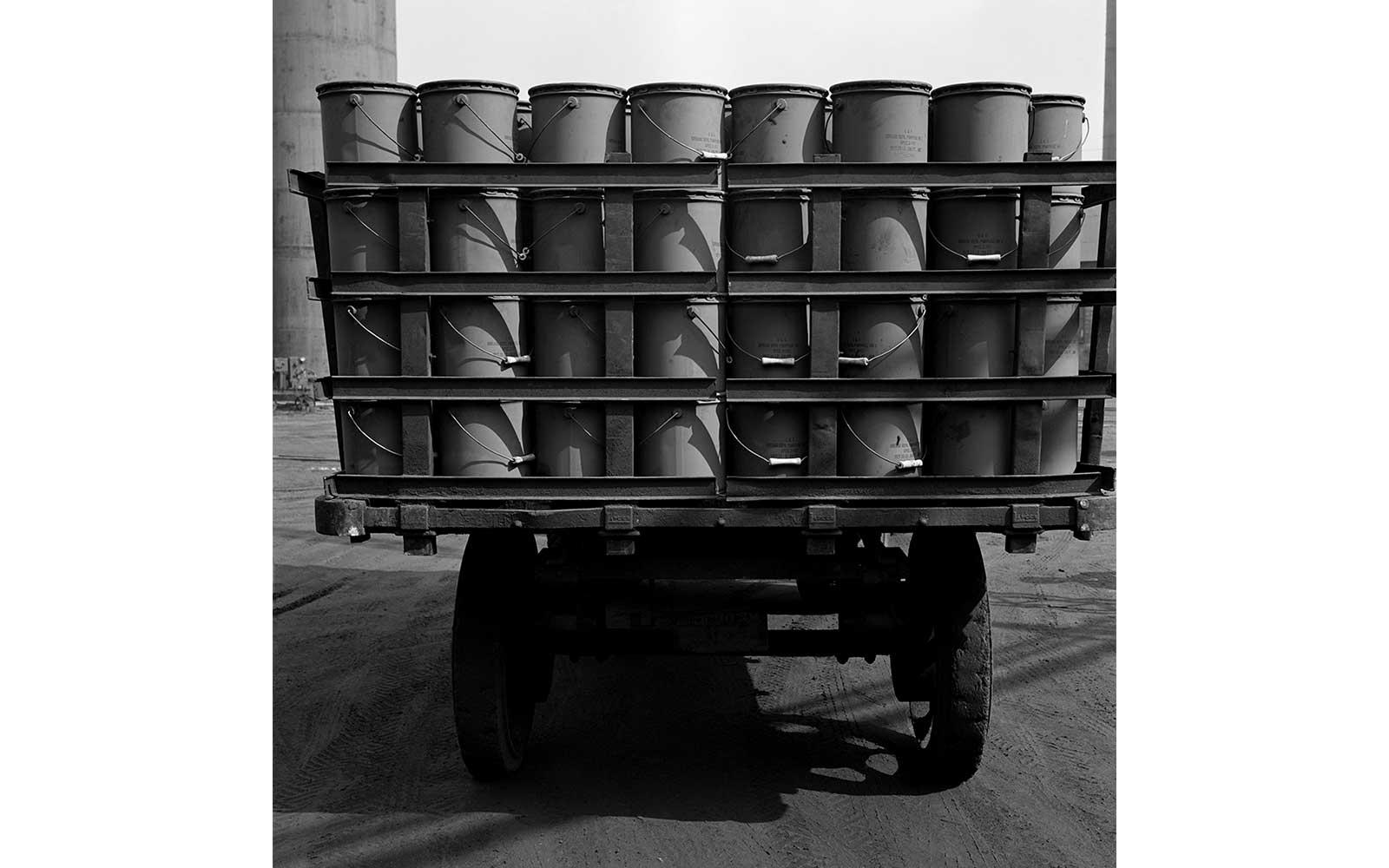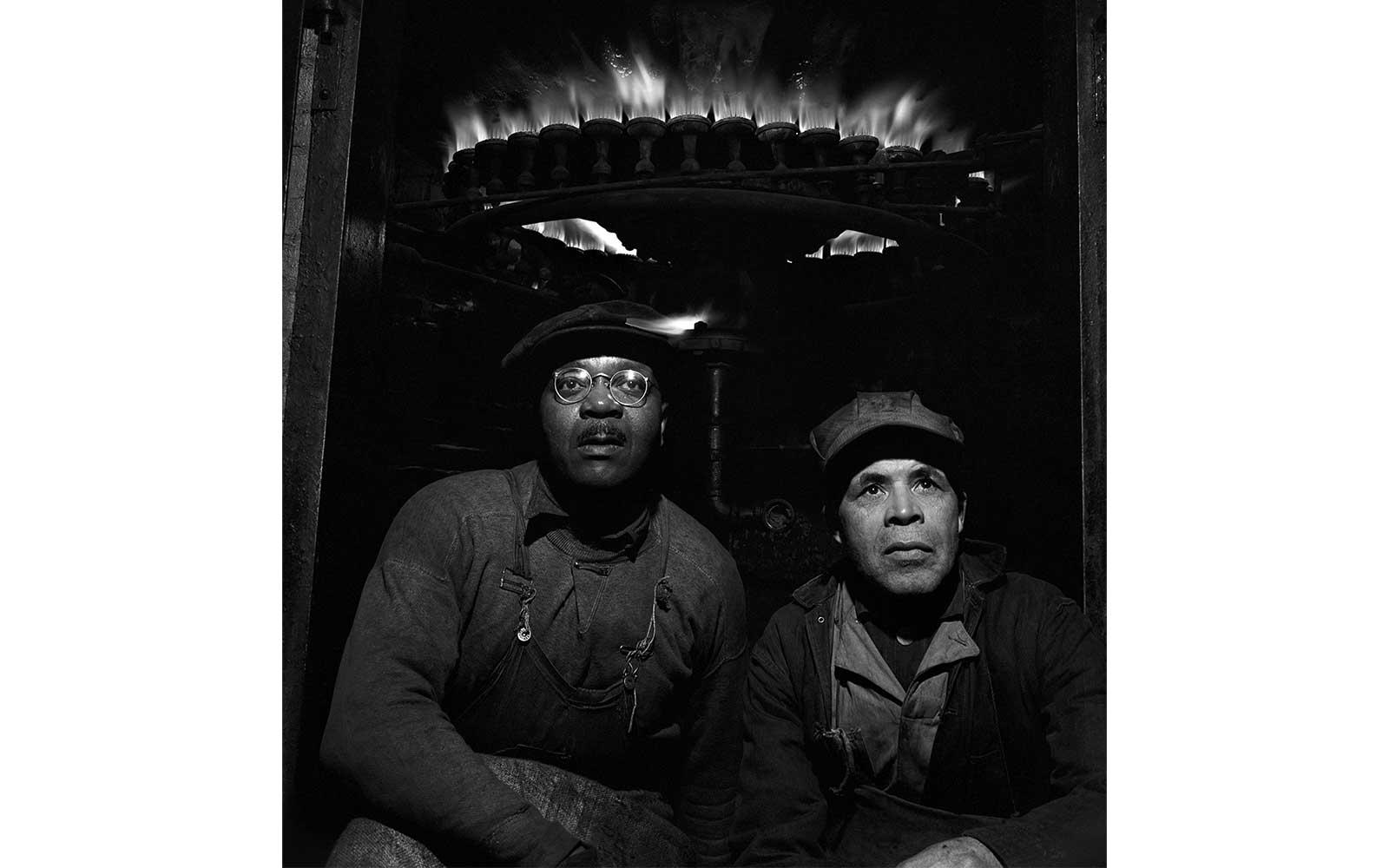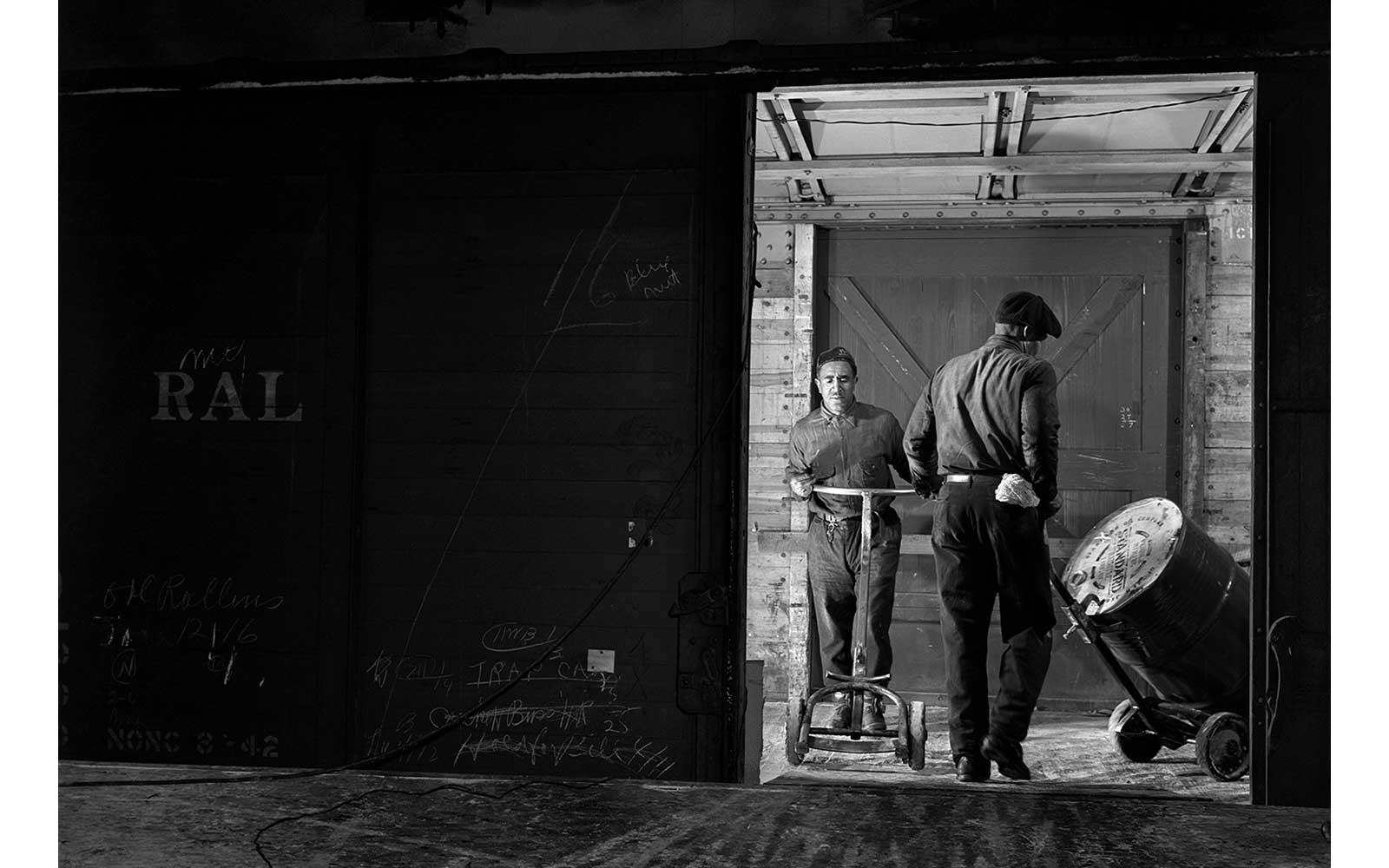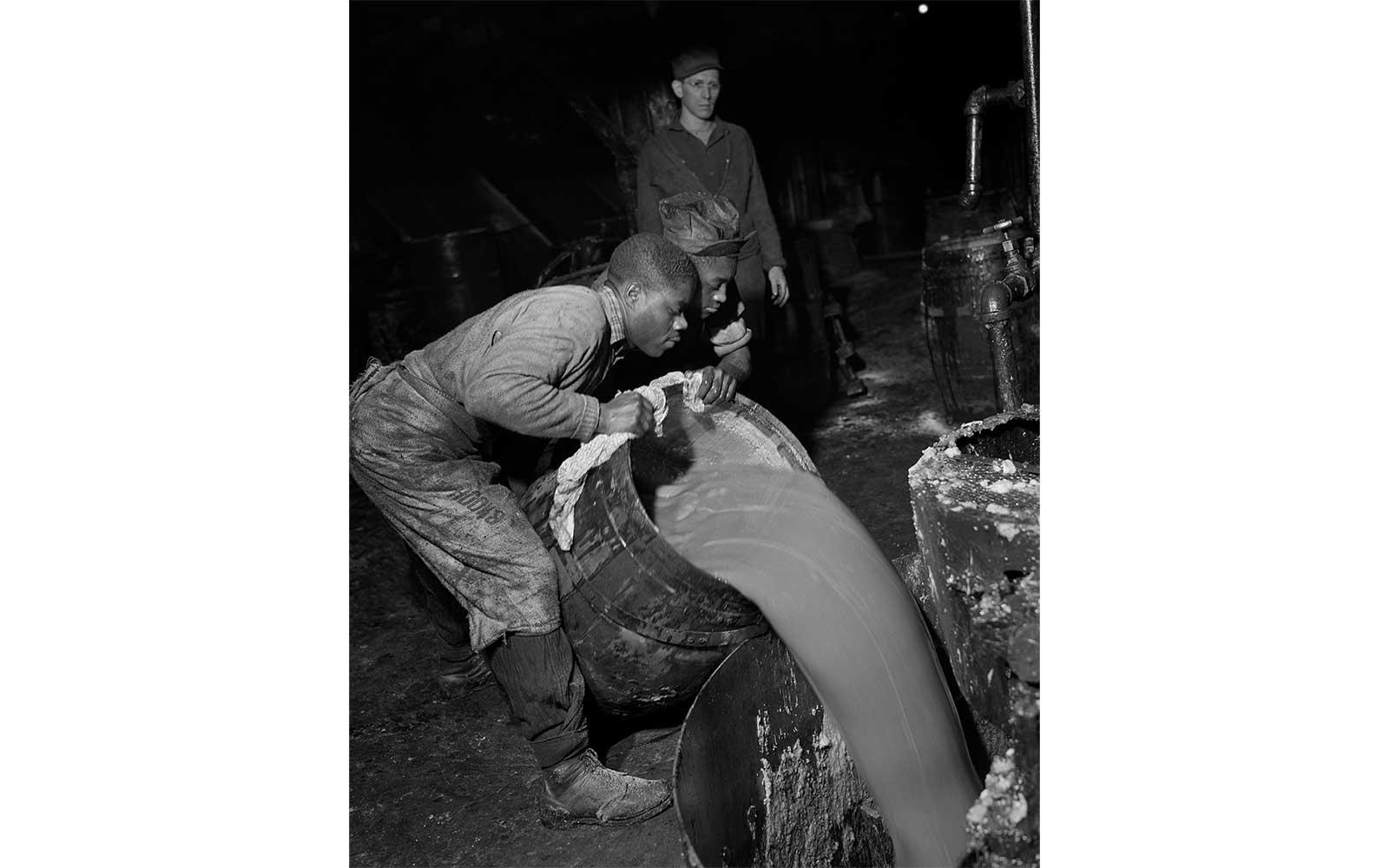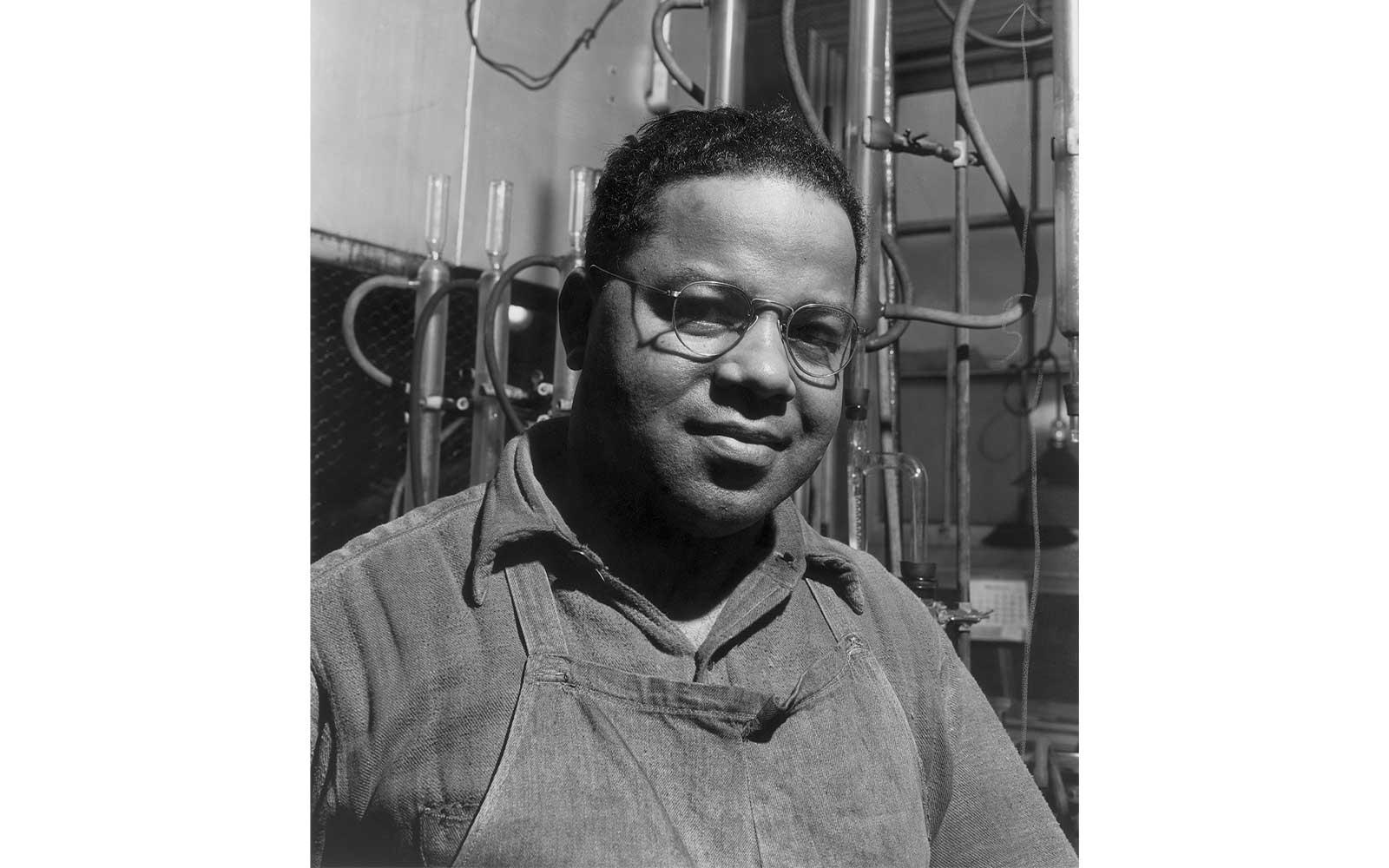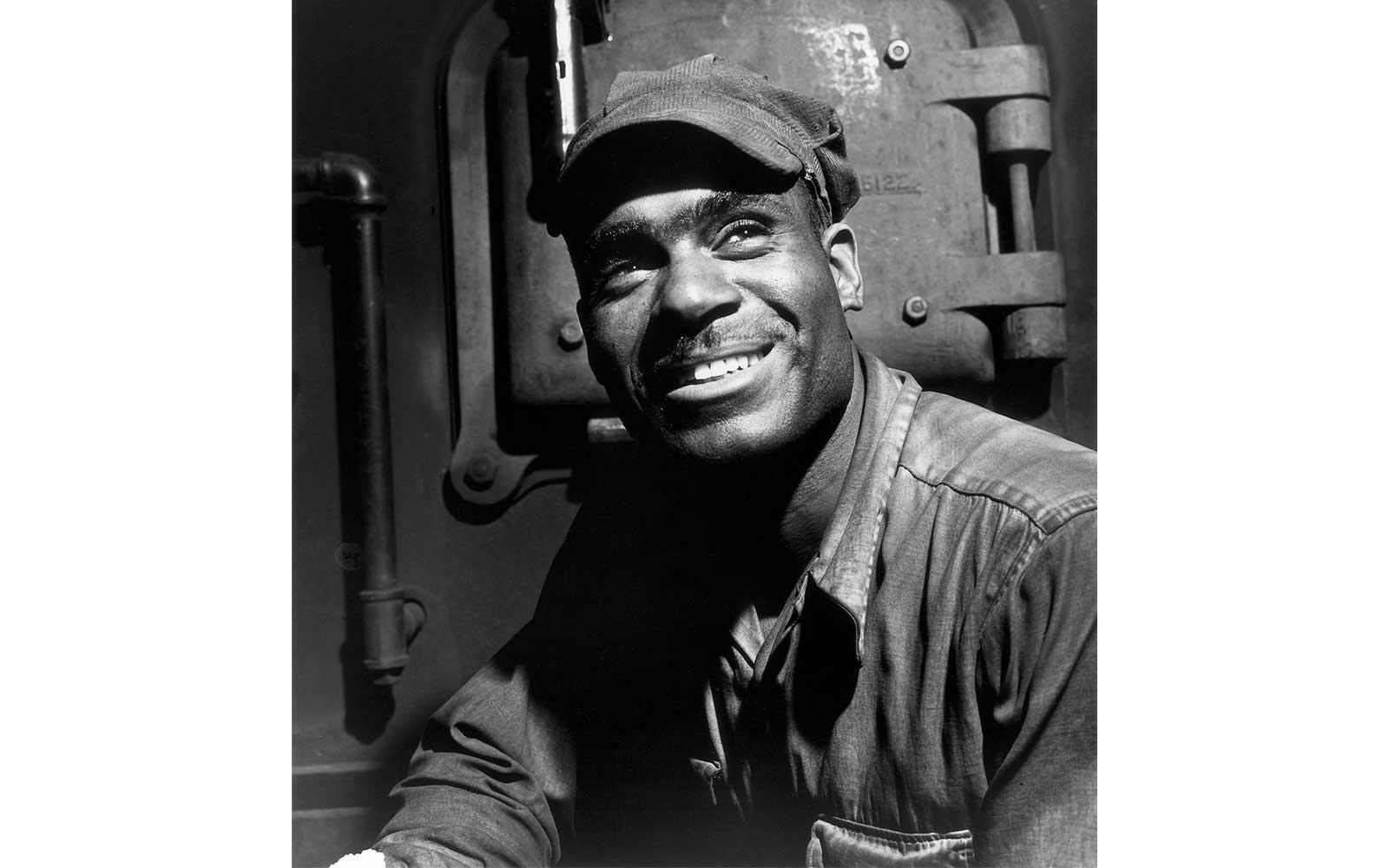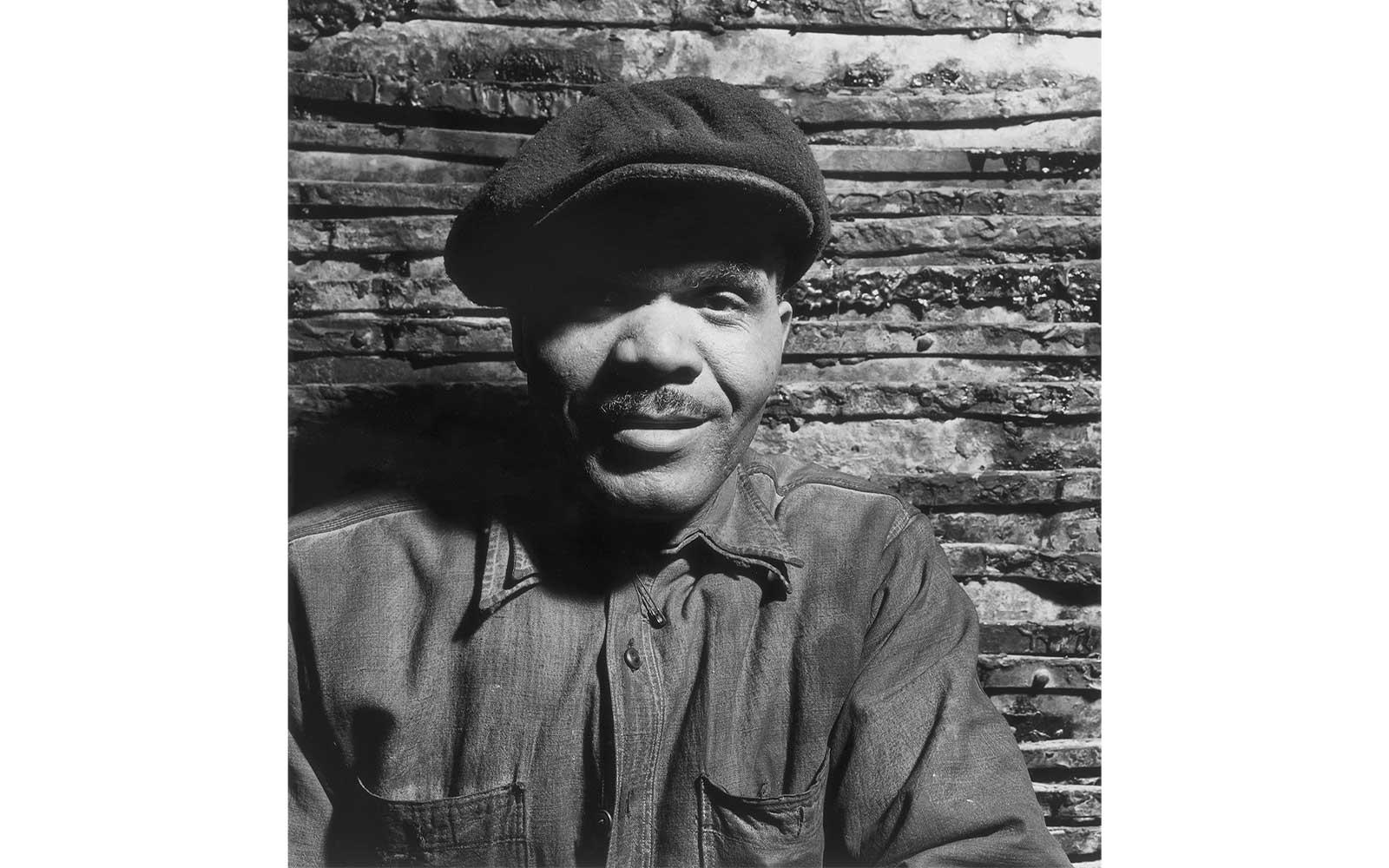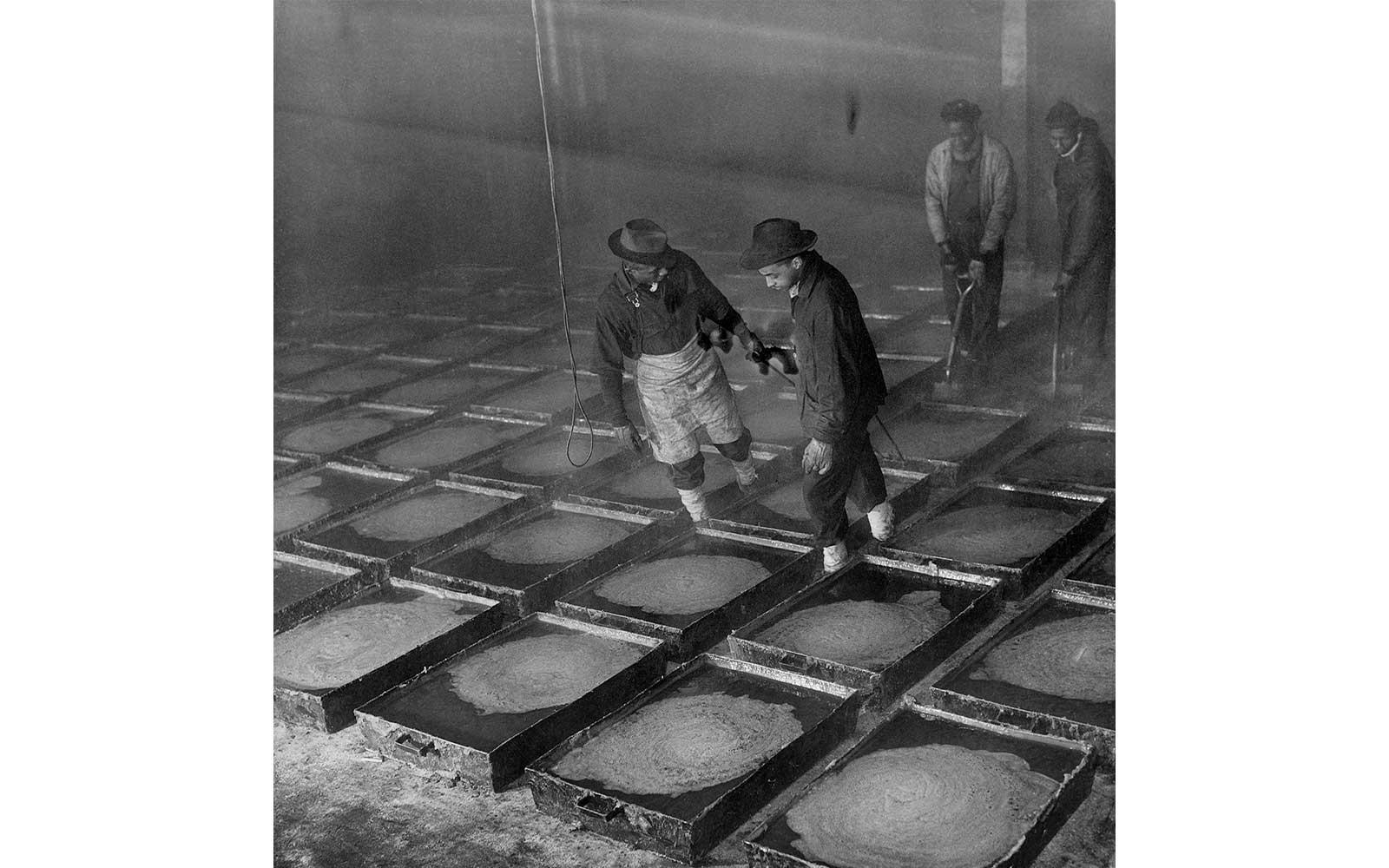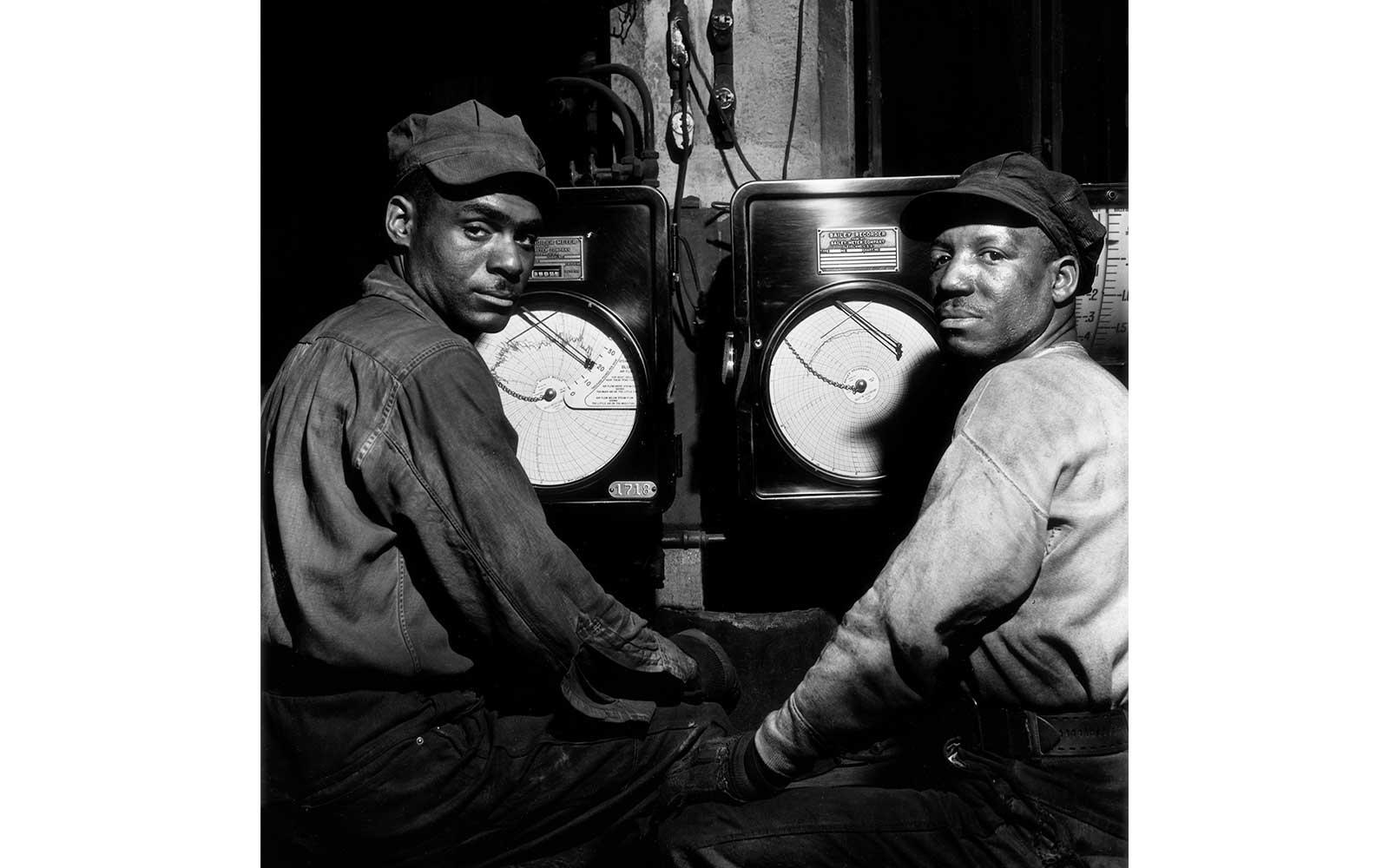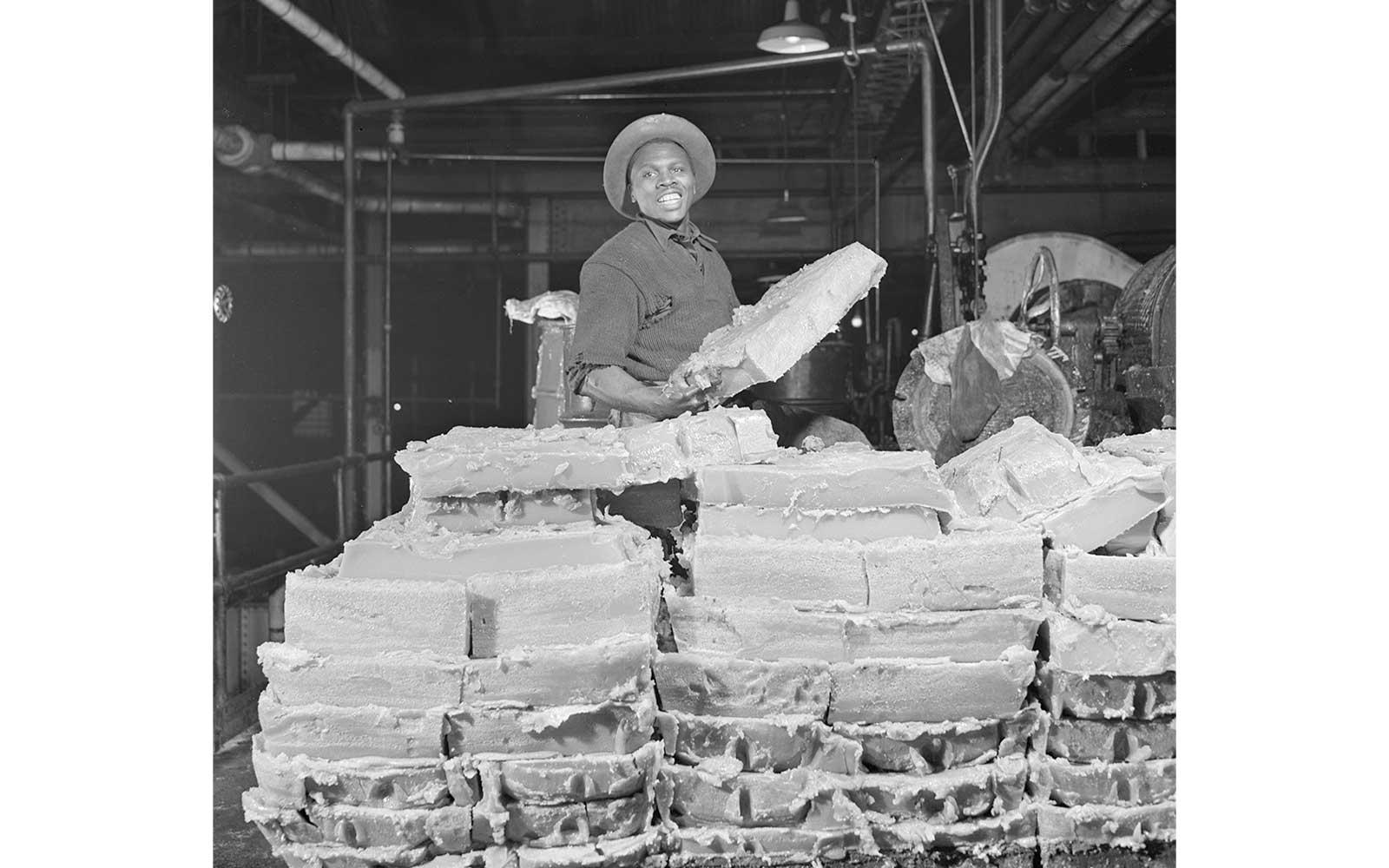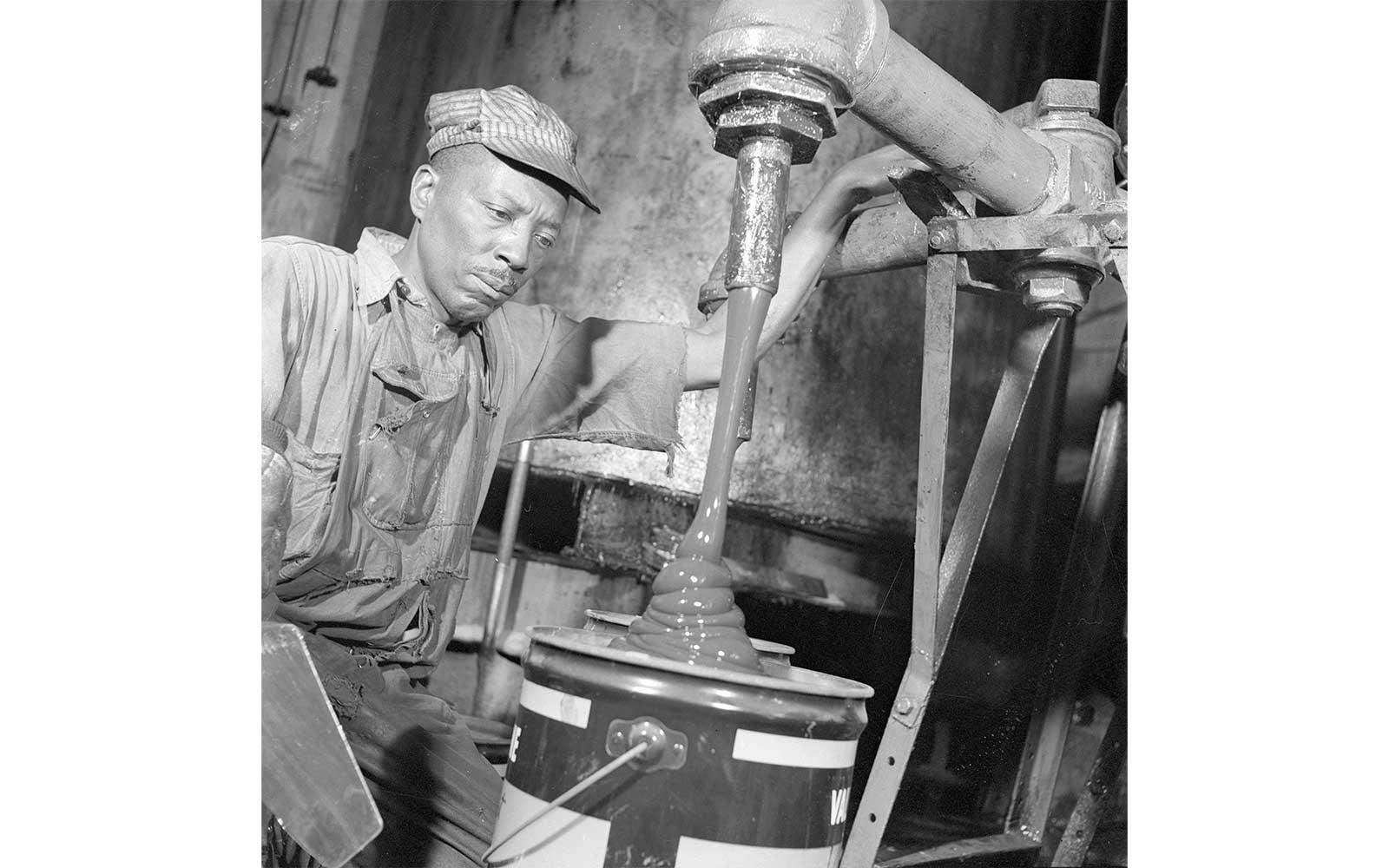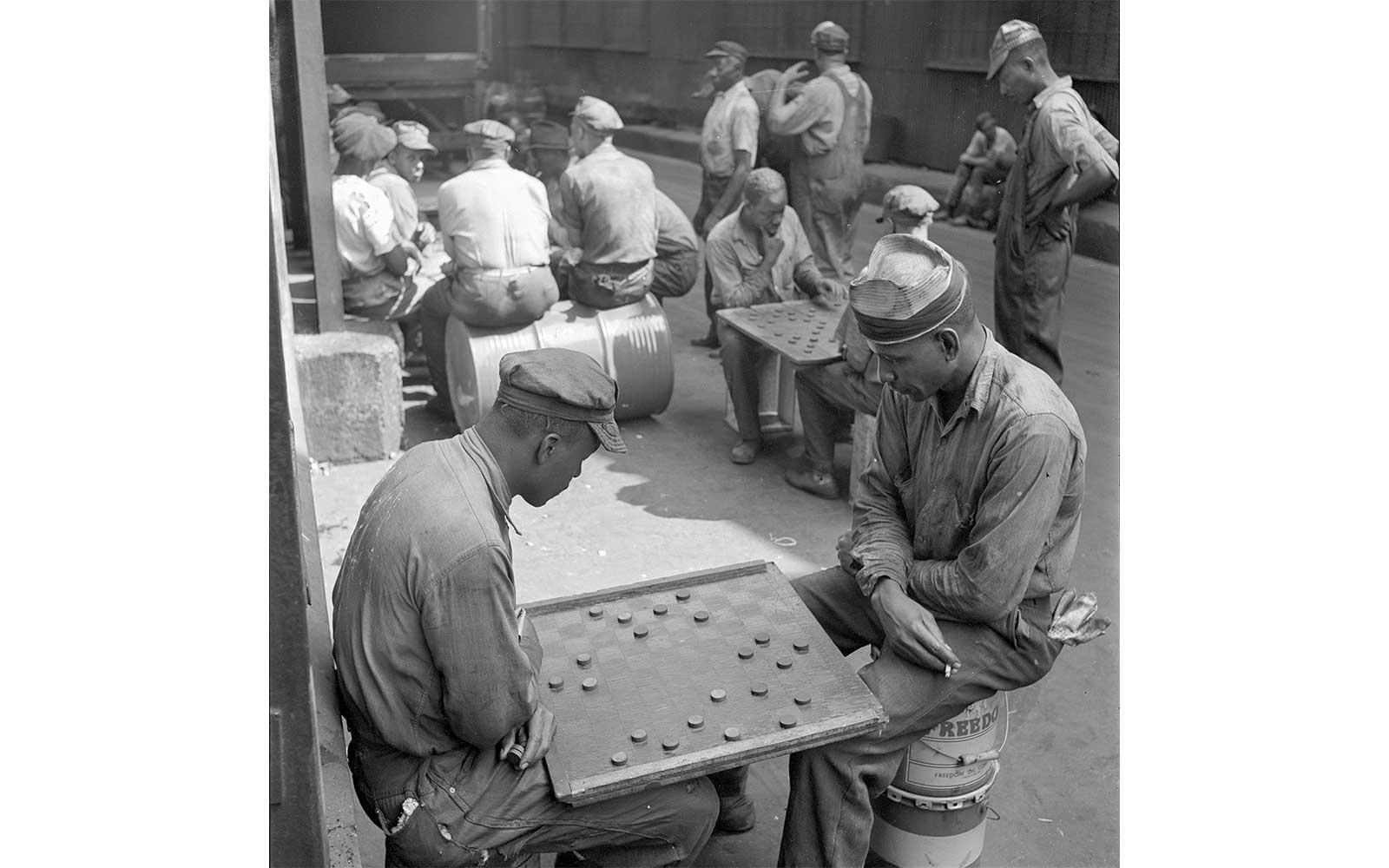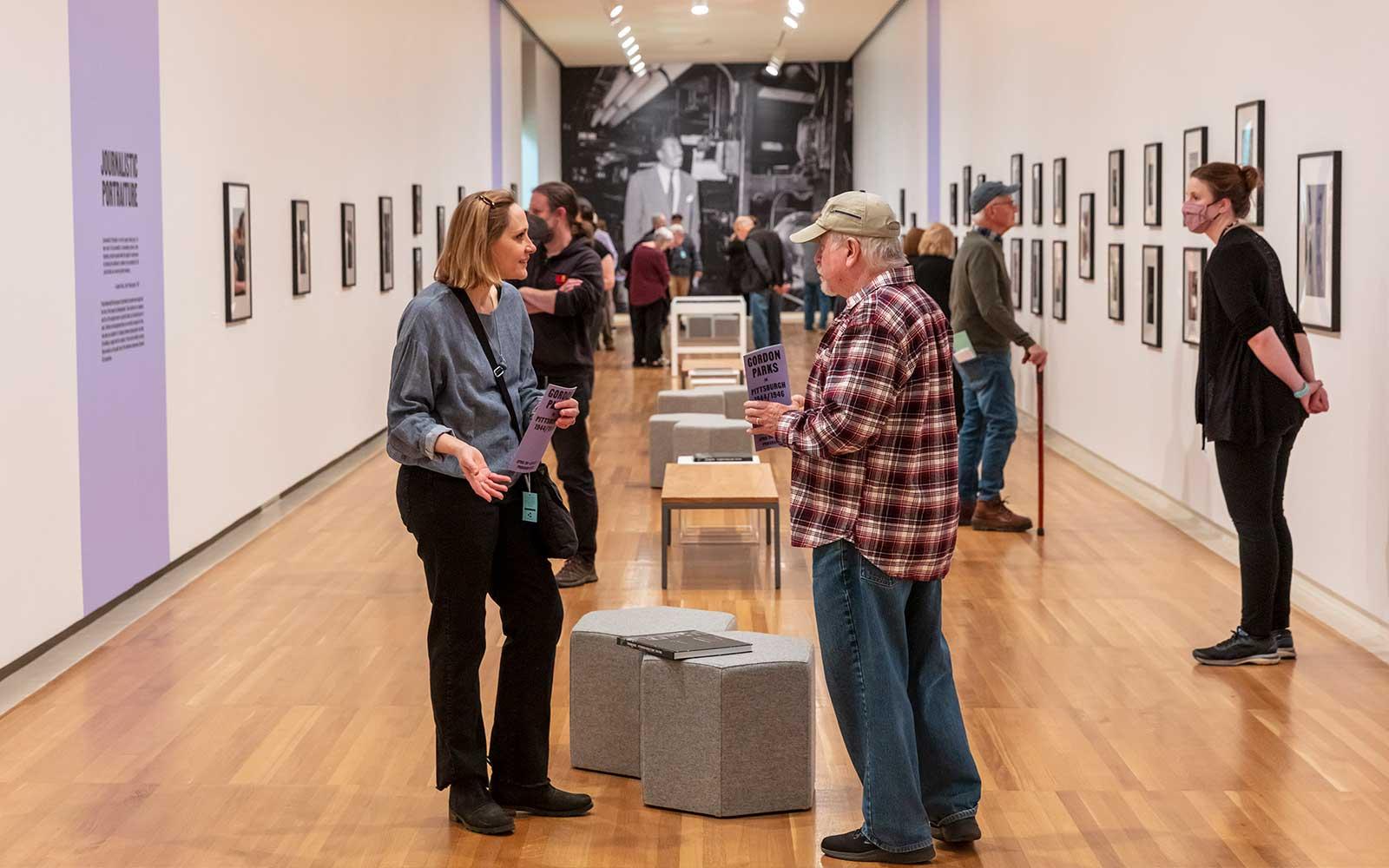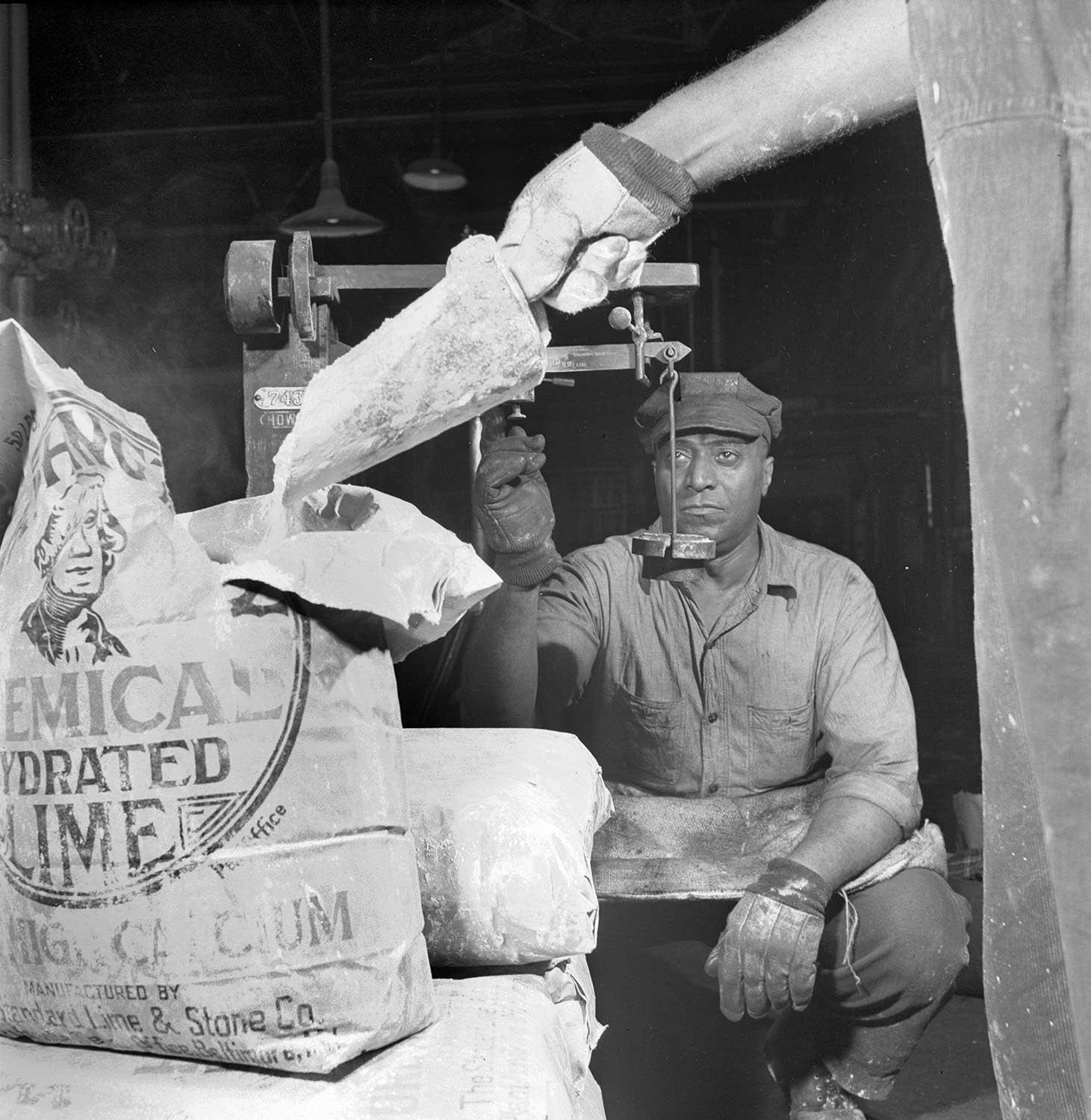In American industrial hubs during World War II, what’s known as the “arsenal of democracy” rapidly manufactured the materials to support the Allied military efforts overseas. This largely invisible labor included a diverse workforce producing everything from steel and ammunition to the grease that lubricated tanks, airplanes, and weapons.
A young Gordon Parks photographed this work at the Penola, Inc. grease plant in Pittsburgh, Pennsylvania, in 1944 and 1946, visualizing the people operating the world’s largest facility of this kind in the world. The clarity and humanity in these images—where the heat and the grime of the plant are vividly present—show one of the twentieth century's preeminent photographers of life in the United States using the camera to honor the individuals undertaking these jobs without overlooking the intensity of their toil.
Mostly unseen by the public, these photographs are on view through August 7, 2022 in Gordon Parks in Pittsburgh, 1944/1946 at Pittsburgh’s Carnegie Museum of Art. An accompanying catalogue published by Steidl in partnership with the Gordon Parks Foundation and the Carnegie Museum of Art includes over 100 photographs, many published for the first time.
“There have been numerous exhibitions in recent years in major museums exploring lesser-known bodies of his work, yet few people could shed light on this particular series before deeper research began,” says Dan Leers, the museum’s curator of photography who organized the exhibition.





